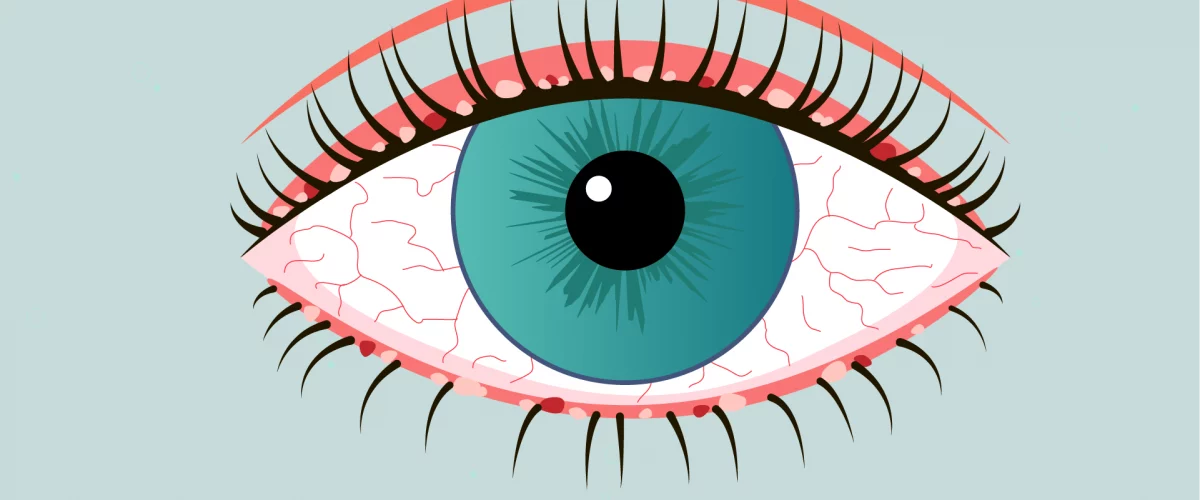Have you ever developed chalazions, styes or blepharitis? These eyelid diseases are closely linked to dry eye: we explain all in this article.
Different eyelid diseases
Chalazion
A chalazion is an inflammation of the eyelid around the meibomian glands. These glands located inside the eyelids secrete lipids (oil) that form part of our tears. These lipids help limit tear evaporation. If the secreted fluid is too thick, the glands can become clogged or even completely blocked. As the oil builds up, the glands start to inflate, which creates a small ball known as a chalazion.
Styes
Unlike a chalazion, a stye is a bacterial infection often caused by Staphylococcus aureus. The stye forms on the edge of the eyelids, a bit like a boil under the eyelashes. It is characterised by swelling with a white dot centred on an eyelash. In general, this swelling is located in a single area of the eyelid. However, it can sometimes affect the entire eyelid.
Demodex
Demodex are small mites that develop among the eyelashes. A large number of Demodex can cause multiple eye problems. The risk of Demodex infestation increases with age. It should be noted that it’s normal to find some Demodex in a healthy person. However, care must be taken to look after the eyelids, to avoid these mites proliferating at the root of the eyelashes.
Blepharitis
Blepharitis is an inflammation of the eyelids. It may be of infectious, allergic, dermatological (rosacea, psoriasis, eczema) or seborrhoeic origin. The cause may be located in an area of the skin, or the meibomian glands, or both. As a result, blepharitis is often associated with the other diseases mentioned above. This condition can affect children as much as adults, making it very common.
The link with dry eye
One of the consequences of eyelid diseases is evaporative dry eye. The meibomian glands found in our eyelids no longer work properly due to inflammation of the eyelids. These glands therefore produce either fewer lipids or poor quality lipids. These lipids play an essential role in limiting tear evaporation and maintaining good quality tears.
What are the symptoms of dry eye disease?
- Dry feeling, itching, burning, stinging, gritty feeling
- Excessive tearing and/or absence of tears
- Difficulty wearing contact lenses for prolonged periods
- Difficulty opening the eyes in the morning (eyelids stuck together)
- Sensitivity to light, wind and/or smoke
- Tired eyes, blurred vision
- It can also be asymptomatic
The importance of eyelid hygiene
Eyelid hygiene is essential to prevent bacterial growth and therefore the development of eyelid disease. In addition, taking care of your eyelids on a daily basis helps limit the effects of dry eye. Eyelid hygiene will prevent meibomian gland obstruction, improve tear quality and reduce symptoms. So it’s a key step in keeping your eyes healthy, one that should not be overlooked. Perform the following procedure daily:
- Warm your eyelids using a warming mask or warm compresses for 5 to 10 minutes. The aim is to liquefy the poor quality meibum (oil).
- Blink under the mask, after 6 minutes, 3 to 5 times, using full blinks.
- Clean the edge of the eyelids with a sterile product (cleansing or eye pads) suitable for daily cleansing of the eyelids, eyelashes and sensitive skin, to remove this meibum and impurities caused by pollution.
IF YOU ARE SUFFERING FROM DRY-EYE ISSUES, PLEASE SEE AN OPHTHALMOLOGIST.




